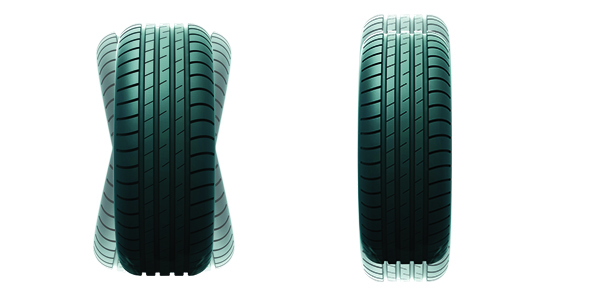Most wheel balancing comebacks can be directly attributed to the way wheels are incorrectly centered when mounted on the balancer. The solution is elusive because most operators have no idea how to determine if the wheel is properly centered.
Front coning has become standard practice in many North American shops as it speeds up the balancing process and requires little or no training. In many cases, front cone mounting can create problems in centering and also damage wheels. However, many wheels can also be front-cone mounted and even some larger hub bore wheels must be front-cone mounted to achieve acceptable centering. Having said this, many operators are incorrectly taught that all front coning is incorrect and should never be done or the wheel is improperly balanced. The problem is the word “always,” which is simply not correct and is easy to disprove with a quick process to check wheel centering when balancing. Read on.
The Solution: Spin It. Turn It. Recheck It.
Below is simple process that can be used to quickly confirm the wheel is centered. Regardless of mounting methods, the operator can confirm the wheel is centered at the balancer before the wheel is balanced.
Validate the centering by taking multiple balance measurements with the wheel unclamped and then re-clamped into different clock positions on the balancer spindle face. Large changes in weight and location signal that the wheel is not centered. If the balance weight and locations repeat (¼-ounce increments on an average car wheel), the wheel has proven itself to be repeatably centered. This is the same principle as doing a “scratch test” on a bench lathe before machining a brake rotor to be sure the rotor is centered on the arbor and the runout is in the rotor and not in the setup in the barrel of the rim so the tire can slide down the rim when mounting the first bead.
***
Best Practice: Inflation Process During Tire Mounting
To ensure the best tire uniformity and ride quality, Michelin’s Tire Fitment Guide states that once the tire has first been properly lubricated, sealed and seated (with the valve core removed), it should then be deflated so that the beads relax. Then, the tire should be re-inflated and brought back up to placard inflation pressure to allow the beads to move back into their correct position on the rim bead seats.
Dave Scribner is a product development manager with deep roots in automotive wheel service, including several patents in iconic wheel balancing equipment. He is currently employed by CEMB/BL Systems. He can be reached at [email protected]















